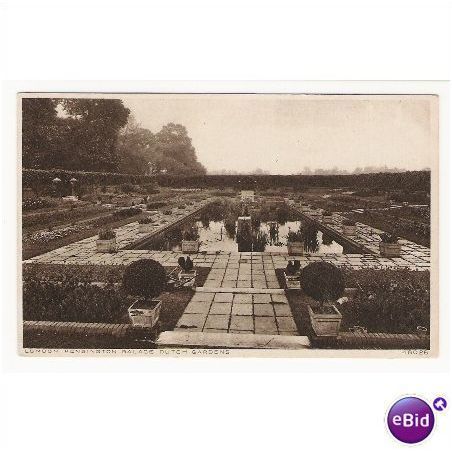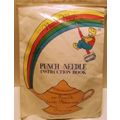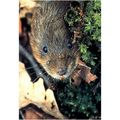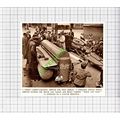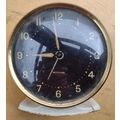London - Kensington Gardens Palace Dutch Gardens c.1910
- Condition : Used
- Dispatch : 2 Days
- Brand : None
- ID# : 32987732
- Quantity : 1 item
- Views : 251
- Location : United Kingdom

- Seller : justthebook (+1699)
- Barcode : None
- Start : Sat 23 Oct 2010 04:05:38 (EDT)
- Close : Run Until Sold
- Remain : Run Until Sold
Checks/Cheques
 for 1 item(s) edit
for 1 item(s) edit
Shipping Calculator
More Listings from This Seller view all
Seller's Description
- Postcard
- Picture / Image: London Kensington Palace Dutch Gardens
- Publisher: Photochrom Co. Ltd.
- Postally used: no
- Stamp: n/a
- Postmark(s): n/a
- Sent to: n/a
- Notes & Key words:
------------------------------------------------
Postage & Packing:
UK (incl. IOM, CI & BFPO): 99p
Europe: £1.60
Rest of world (inc. USA etc): £2.75
No additional charges for more than one postcard. You can buy as many postcards from me as you like and you will just pay the fee above once. (If buying postcards with other things such as books, please contact or wait for invoice before paying).
Payment Methods:
UK - PayPal, Cheque (from UK bank) or postal order
Outside UK: PayPal or Google Checkout ONLY please. NO non-UK currency checks or money orders (sorry).
NOTE: All postcards are sent in brand new stiffened envelopes which I have bought for the task. These are specially made to protect postcards and you may be able to re-use them. In addition there are other costs to sending so the above charge is not just for the stamp!
----------------------------------------------
Text from the free encyclopedia WIKIPEDIA may appear below to give a little background information:
*************
Kensington Palace Gardens is a street in west central London which contains some of the grandest and most expensive houses in the world. It was the location of the London Cage, the British government MI9 centre used during the Second World War and the Cold War.
A tree-lined avenue half a mile long in the heart of embassy land, Kensington Palace Gardens is the "most exclusive address" in London, according to Knight Frank. It is one of the most expensive residential streets in the world, and has long been known as "Billionaires Row", due to the wealth of its private residents, although the majority of its current occupants are embassies and ambassadorial residences.
It is immediately to the west of Kensington Gardens and connects Notting Hill Gate with Kensington High Street. The southern section of Kensington Palace Gardens is called Palace Green.
Kensington Gardens, once the private gardens of Kensington Palace, is one of the Royal Parks of London, lying immediately to the west of Hyde Park. Most of it is in the City of Westminster, but a small section to the west is in the Royal Borough of Kensington and Chelsea. The park covers an area of 111 hectares (275 acres).[1] The open spaces of Kensington Gardens, Hyde Park, Green Park and St. James's Park together form an almost continuous "green lung" in the heart of London between Kensington and Westminster.
Kensington Gardens was carved out of the western section of Hyde Park and designed c.1728-1738 by Henry Wise and Charles Bridgeman, with fashionable features including the Round Pond, formal avenues and a sunken Dutch garden. Long after they had been opened to the public, the King asked his Prime Minister the possible cost of enclosing them again: the reply was "a Crown".
Charles Bridgeman created the Serpentine in the 1730s by damming the eastern outflow of the River Westbourne from Hyde Park for Queen Caroline.[2] The part of the Serpentine that lies within Kensington Gardens is known as "The Long Water". At its north-western end (originally the inflow of the River Westbourne) in an area known as "The Italian Garden", there are four fountains and a number of classical sculptures. At the foot of the Italian Gardens is a parish boundary marker, delineating the boundary between Paddington and St George Hanover Square parishes, on the exact centre of the Westbourne river.
Kensington Gardens are generally regarded as being the western extent of the neighbouring Hyde Park from which they were originally taken, with West Carriage Drive (The Ring) and the Serpentine Bridge forming the boundary between them. The Gardens are fenced and more formal than Hyde Park. Kensington Gardens are open only during the hours of daylight, whereas Hyde Park is open from 6 am until midnight all year round, which includes many hours of darkness.
Kensington Gardens were long regarded as smarter than Hyde Park because of its more private character around Kensington Palace. However, in the late 1800s, Hyde Park was considered the more "fashionable" of the two because of its location nearer to Park Lane (Mayfair) and Knightsbridge, adjoining the entrance to central London opposite Wellington Arch and was therefore more crowded.[3]
The land surrounding Kensington Gardens was predominantly rural and remained largely undeveloped until the Great Exhibition in 1851. Many of the original features survive along with the Palace, and now there are other public buildings such as the Albert Memorial (at the south-east corner of Kensington Gardens, opposite the Royal Albert Hall), the Serpentine Gallery, and Speke's monument.
The park also contains the Elfin Oak, an elaborately carved 900—year old tree stump.
Listing Information
| Listing Type | Gallery Listing |
| Listing ID# | 32987732 |
| Start Time | Sat 23 Oct 2010 04:05:38 (EDT) |
| Close Time | Run Until Sold |
| Starting Bid | Fixed Price (no bidding) |
| Item Condition | Used |
| Bids | 0 |
| Views | 251 |
| Dispatch Time | 2 Days |
| Quantity | 1 |
| Location | United Kingdom |
| Auto Extend | No |

